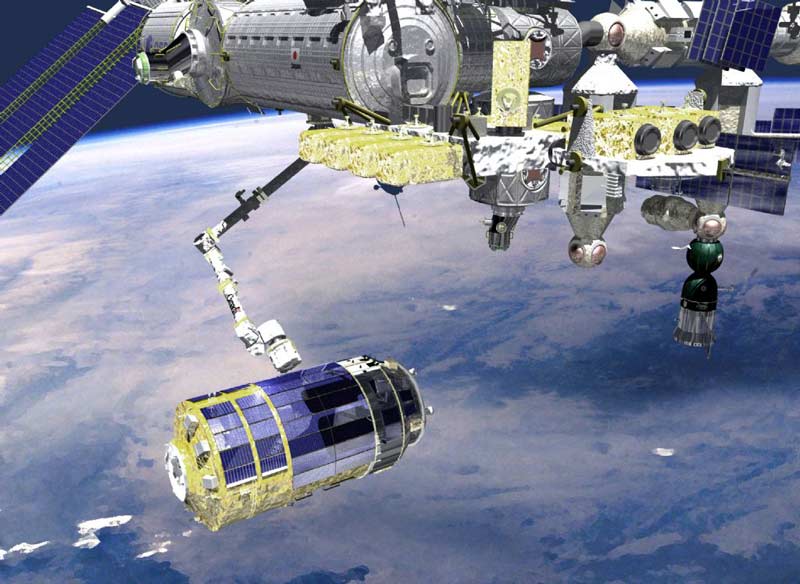
Astronauts aboard the International Space Station are gearing up for the arrival of an unmanned Japanese cargo spacecraft, scheduled to dock at the orbiting outpost early Thursday morning (Jan. 27).
Crewmembers will use the station's robotic arm to pluck the vessel, called Kounotori 2, from space at about 6:44 a.m. EST (1144 GMT) on Thursday. Kounotori 2 should actually berth with the station's Earth-facing Harmony port a few hours later, delivering several tons of food and supplies, NASA officials said.
NASA TV will broadcast the grappling and docking operations live on its website starting at 6:00 a.m. EST (1100 GMT), officials have said.
Kounotori 2 — "Kounotori" is Japanese for "white stork" — blasted off Jan. 22 at 2:37 p.m. Japan Standard Time (12:37 a.m. EST, 0537 GMT) from the Tanegashima Space Center. It launched into orbit atop Japan's expendable H-2B rocket.
The cargo ship "has been flying smoothly, and it is gradually approaching the International Space Station through an altitude control maneuver," officials from the Japanese Aerospace Exploration Agency (JAXA) said in a recent statement.
This is the second voyage for Japan's fledgling orbital spacecraft fleet. The first Kounotori cargo ship flew to the space station in September 2009.
Kounotori 2 is a gold cylinder about 33 feet (10 meters) long and 14 feet (4.4 m) wide, packed with 5.3 tons of supplies for the lab, including fresh food. Some of this cargo will be unloaded inside the station, while other larger pieces of spare hardware will be temporarily stowed on the lab's exterior.
Get the Space.com Newsletter
Breaking space news, the latest updates on rocket launches, skywatching events and more!
In the early morning hours of Jan. 27, the spacecraft will approach the station, coming to within about 33 feet (10 m) of it. At that point, astronauts Cady Coleman and Paolo Nespoli will use the space station's Canadarm2 robotic arm to grab the cargo vessel and attach it to the Earth-facing port of the station's Harmony module.
In the following days, a pallet full of spare parts will be extracted from a slot in Kounotori and attached to an experiment platform outside the station's Japanese Kibo module, NASA officials said. Other cargo will be transferred inside the space station. [Graphic: The International Space Station, Inside and Out]
The cargo vessel will likely remain attached to the station for about 40 days. During that time, it will be filled with trash, and detached at the end of March to burn up as it re-enters Earth's atmosphere, officials have said.
Japan's Kounotori freighters, officially known as H-2 Transfer Vehicles (HTVs), are part of a growing suite of internationally built unmanned cargo spaceships that help supply the International Space Station. After NASA's astronaut-carrying fleet of space shuttles retire later this year, these robotic cargo ships will play a vital role in re-stocking the outpost for its live-in crews, officials have said.
You can follow SPACE.com senior writer Mike Wall on Twitter: @michaeldwall.
Join our Space Forums to keep talking space on the latest missions, night sky and more! And if you have a news tip, correction or comment, let us know at: community@space.com.

Michael Wall is a Senior Space Writer with Space.com and joined the team in 2010. He primarily covers exoplanets, spaceflight and military space, but has been known to dabble in the space art beat. His book about the search for alien life, "Out There," was published on Nov. 13, 2018. Before becoming a science writer, Michael worked as a herpetologist and wildlife biologist. He has a Ph.D. in evolutionary biology from the University of Sydney, Australia, a bachelor's degree from the University of Arizona, and a graduate certificate in science writing from the University of California, Santa Cruz. To find out what his latest project is, you can follow Michael on Twitter.